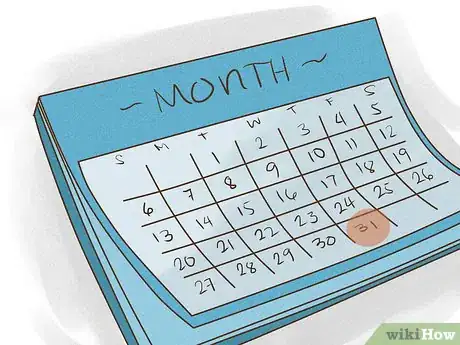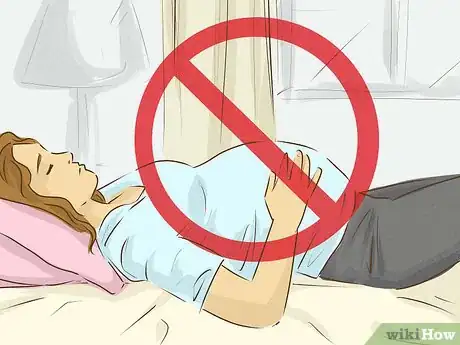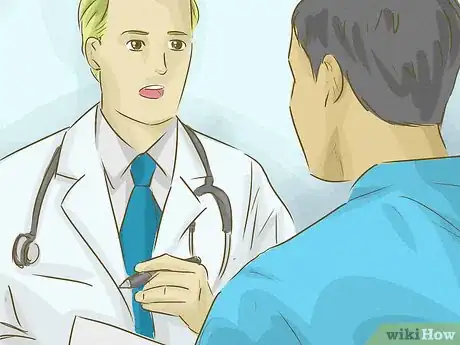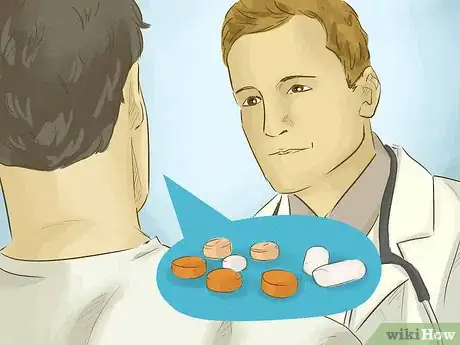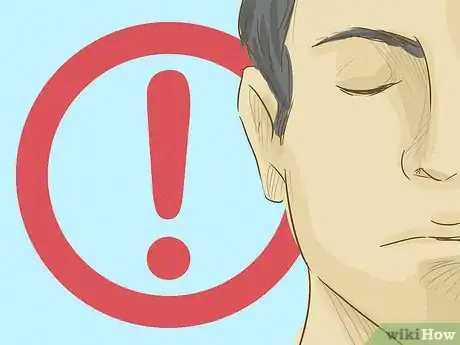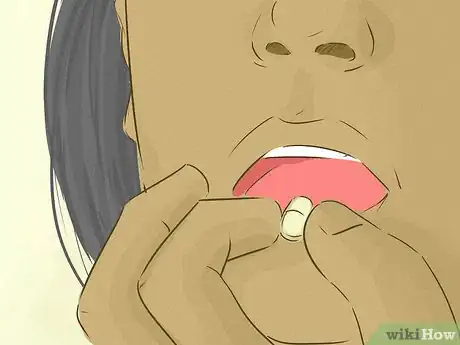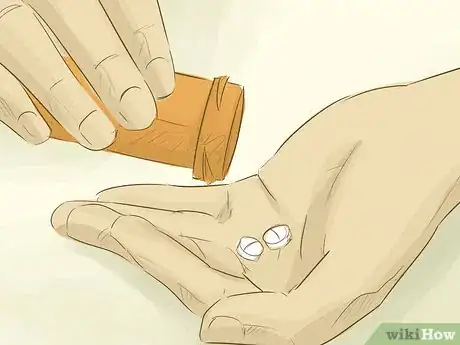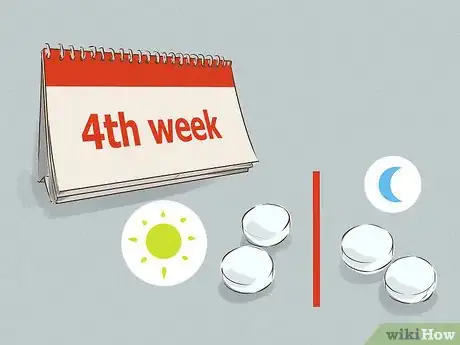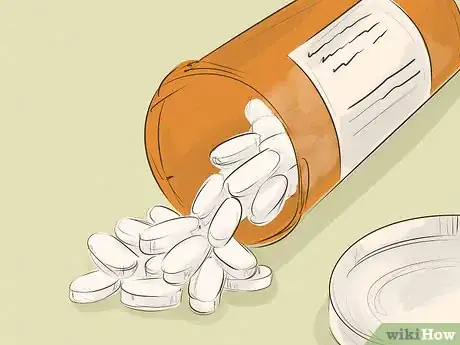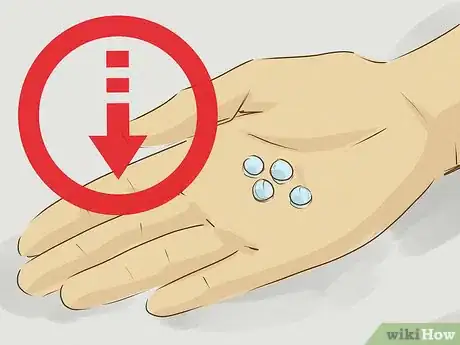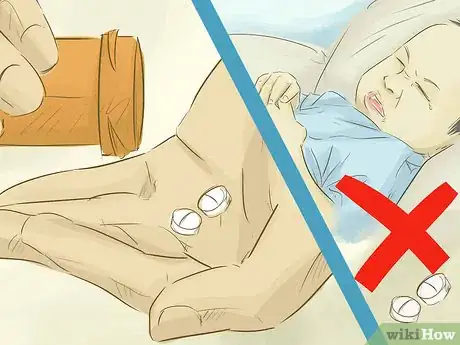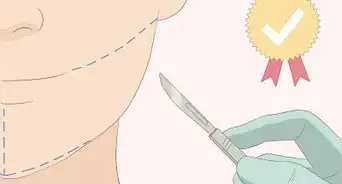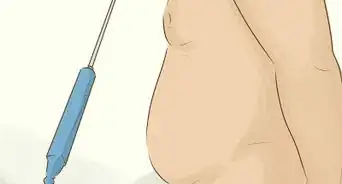This article was medically reviewed by Luba Lee, FNP-BC, MS. Luba Lee, FNP-BC is a Board-Certified Family Nurse Practitioner (FNP) and educator in Tennessee with over a decade of clinical experience. Luba has certifications in Pediatric Advanced Life Support (PALS), Emergency Medicine, Advanced Cardiac Life Support (ACLS), Team Building, and Critical Care Nursing. She received her Master of Science in Nursing (MSN) from the University of Tennessee in 2006.
There are 18 references cited in this article, which can be found at the bottom of the page.
This article has been viewed 55,882 times.
Contrave is a weight-loss medication that combines naltrexone and bupropion. Naltrexone is generally taken by people with addictions to narcotics or alcohol, while bupropion is an antidepressant. Both of these medications are also used to help people quit smoking. Contrave may be right for you if you are overweight and have health problems due to your size.[1] When beginning Contrave, your doctor will likely have you increase your dosage gradually. Contrave works best when combined with a reduced-calorie diet and increased physical activity. Keep in mind, Contrave is not for everyone, and you shouldn't take it if you are pregnant or nursing, are under 18, have uncontrolled high blood pressure, or are prone to seizures.
Steps
Starting to Take Contrave
-
1Learn if you're a good candidate. Typically, this drug is prescribed if you are overweight or very overweight, particularly if you have 1 or more obesity-related health problems, such as hypertension, diabetes, or dyslipidemia. Contrave can help you lose weight over time when combined with other weight loss activities, such as diet and exercise.[2]
- "Overweight" is classified as a body mass index (BMI) of 25 to 30. If you have a BMI of 27-30 or above, you may qualify for this medication. For reference, a person who is 5 feet (1.5 m) 9 inches (23 cm) and weighs 169 to 202 pounds (77 to 92 kg) is considered overweight.
-
2Bring up the medication at your doctor's office. Your doctor is the best judge of whether this medication is right for you. Ask your doctor if you can be prescribed this medication or something like it to help you lose weight.
- You could say, "I'm worried about my weight. Could the drug Contrave be a possible solution for me?"
- You could also ask, "I know my weight is a health risk. Are there any drugs you could recommend to help me lose weight?"
Advertisement -
3Expect follow-up visits. Because this medication can have side effects, your doctor will likely want to see you again in a relatively short time, maybe a month or so. This follow-up appointment will just be to make sure the drug is effective and not causing you any discomfort.[3]
- Usually, your doctor will not need to run tests before prescribing this medication, but it depends on your health and what your doctor thinks is best for you.
- You will need regular checkups with this medication, as laid out by your doctor.
- Your doctor will need to monitor you for neurological and psychiatric side effects, such as agitation, irritability, depression, confusion, anxiety, or unusual behaviors. They will also need to check your blood pressure, pulse, and glucose levels both before and during the course of medication.
-
4Don't take Contrave while pregnant or breastfeeding. This drug has been linked to fetal deaths due to abnormalities. This drug is not safe in any trimester for pregnant women. Studies haven't been done on the safety of taking Contrave while breastfeeding, so it is not recommended.[4]
- You should be using some form of birth control while on this drug so that you don't get pregnant. Your doctor will likely want to do a pregnancy test before placing you on this medication.
-
5Ask about taking Contrave if you have high blood pressure. If you have high blood pressure, it's not recommended that you take Contrave. However, if your high blood pressure is regulated by medication, your doctor may still suggest you take this medication. Talk to your doctor about which blood pressure medications are safe to take with Contrave.[5]
- High blood pressure is defined as 130 mm HG or higher for systolic pressure (the larger number) and 80 mm HG or higher for diastolic pressure (the lower number).
-
6Tell your doctor if you're taking a monoamine oxidase inhibitor (MAOI). If your doctor doesn't know that you're on or have been on an MAOI in the last 2 weeks, tell your doctor before beginning Contrave. MAOI is a type of antidepressant, and it shouldn't be taken at the same time as Contrave.[6]
-
7Avoid taking Contrave if you have seizures. This drug can increase your chance of having seizures. Therefore, if you have a seizure disorder, it's best to avoid this drug, unless your doctor suggests otherwise.[7]
Incorporating Contrave into Your Schedule
-
1Begin with a single tablet a day in the morning for the first week. Generally, you don't start taking the full dose right away. Often, the doctor will start you on a single tablet in the morning in the first week.[8]
- A typical tablet is 8 milligrams of naltrexone HCI and 90 milligrams of bupropion HCI.
- Swallow the Contrave tablet whole.
- Avoid taking this medication with high-fat meals.
-
2Take 2 tablets a day in the second week. By the second week, you'll likely be taking a tablet in the morning and a tablet at night. Your doctor should tell you if this schedule is the best one for you.[9]
-
3Take 3 tablets a day in the third week. In the third week, you'll take 2 tablets in the morning and 1 at night. By this point, you're almost up to your full dose, so be patient.[10]
-
4Move up to 4 tablets in week 4. By week 4, you will likely be taking your full dose. You'll take 2 tablets in the morning and 2 tablets at night. You'll likely stay at this dose for as long as you're on the medication, unless your doctor says otherwise.[11]
-
5Set up a follow-up appointment after week 12. Once you’ve been on the medication for 12 weeks, your doctor will assess your progress and decide if your dosage needs to be adjusted. If you experience side effects or have any concerns, schedule an earlier follow-up.
-
6Don't double dose. If you miss a dose of Contrave, don't try to double at your next dosage. Just skip the dose and try to remember to take it the next time you're supposed to.[12]
-
7Take Contrave with food, avoiding high-fat meals. You should take this medication with food. However, you shouldn't take this medication with high-fat meals, which can lead to a higher risk of seizures.[13]
- For instance, don't take it with a meal that's full of fatty fried foods, such as fried chicken and French fries. You also shouldn’t take it with pizza or a cream-based pasta.
-
8Reduce the dose gradually when stopping. Just like you increased the dose gradually when getting on this medication, it's also a good idea to decrease the dose gradually when stopping. Talk to your doctor about a plan for reducing the dosage to stop Contrave.[14]
- You usually stop this medication after you've lost the amount of weight you need to lose.
Taking Precautions
-
1Skip alcohol while on Contrave. It's generally not a good idea to drink alcohol while you're on this medication, since the combination of Contrave and alcohol can make you feel sick. If you must drink, ask your doctor about how much and how often is appropriate.[15]
-
2Double check for drug interactions. A drug interaction means that taking 2 drugs together has an adverse effect. Your doctor should check for interactions with this drug, and your pharmacist will likely double check. Nonetheless, it's still a good idea to see if this drug interacts with any medications you're already on. Also, always check before taking new prescribed medications or over-the-counter medications by talking to your doctor.[16]
- Some common drug interactions include antidepressants and pain medications.
- You can look up drug interactions in pill books or online.[17]
-
3Don't give Contrave to children 18 and under. Not enough studies have been performed on this drug to establish the safety of it for use on children. Therefore, this medication should not be given to children.[18]
-
4Be aware of increased suicidal thoughts and depression. This medication can increase suicidal thoughts, particularly in young adults. If you are experiencing this phenomenon, talk to your doctor immediately.[19]
- It can also cause irritability, depression, anxiety, confusion, agitation, or behavioral changes. Talk to your doctor if you experience any of these symptoms.
-
5Watch for other side effects. Like any medication, Contrave can have side effects. You may notice stomach issues, such as nausea, vomiting, diarrhea, and constipation. You may also notice headaches or dry mouth, and you may have trouble sleeping. Increased blood pressure and an increased chance of seizures are also side effects for some people.[20]
- Talk to your doctor if you're experiencing these side effects.
-
6Call emergency services if you notice signs of an overdose. As with many drugs, Contrave can cause issues if you take too much. You can overdose on it. If you take too much, watch for the symptoms, which include confusion, dizziness, muscle cramps, extreme sleepiness, and a blue tinge to your fingernails, lips, and skin. You may also faint.[21]
References
- ↑ https://www.health.harvard.edu/blog/fda-approves-weight-loss-drug-contrave-201409127431
- ↑ https://www.mayoclinic.org/drugs-supplements/naltrexone-and-bupropion-oral-route/description/drg-20122495
- ↑ https://www.mayoclinic.org/drugs-supplements/naltrexone-and-bupropion-oral-route/precautions/drg-20122495
- ↑ https://www.mayoclinic.org/drugs-supplements/naltrexone-and-bupropion-oral-route/before-using/drg-20122495
- ↑ https://www.accessdata.fda.gov/drugsatfda_docs/label/2017/200063s006lbl.pdf
- ↑ http://obesity.aace.com/files/obesity/toolkit/contrave_patient_info.pdf
- ↑ https://www.health.harvard.edu/blog/fda-approves-weight-loss-drug-contrave-201409127431
- ↑ http://obesity.aace.com/files/obesity/toolkit/contrave_patient_info.pdf
- ↑ https://www.mayoclinic.org/drugs-supplements/naltrexone-and-bupropion-oral-route/proper-use/drg-20122495
- ↑ http://obesity.aace.com/files/obesity/toolkit/contrave_patient_info.pdf
- ↑ https://www.mayoclinic.org/drugs-supplements/naltrexone-and-bupropion-oral-route/proper-use/drg-20122495
- ↑ https://www.mayoclinic.org/drugs-supplements/naltrexone-and-bupropion-oral-route/proper-use/drg-20122495
- ↑ https://www.mayoclinic.org/drugs-supplements/naltrexone-and-bupropion-oral-route/precautions/drg-20122495
- ↑ https://www.mayoclinic.org/drugs-supplements/naltrexone-and-bupropion-oral-route/precautions/drg-20122495
- ↑ https://www.mayoclinic.org/drugs-supplements/naltrexone-and-bupropion-oral-route/precautions/drg-20122495
- ↑ https://www.mayoclinic.org/drugs-supplements/naltrexone-and-bupropion-oral-route/before-using/drg-20122495
- ↑ http://obesity.aace.com/files/obesity/toolkit/contrave_patient_info.pdf
- ↑ https://www.mayoclinic.org/drugs-supplements/naltrexone-and-bupropion-oral-route/proper-use/drg-20122495
- ↑ https://www.accessdata.fda.gov/drugsatfda_docs/label/2017/200063s006lbl.pdf
- ↑ https://www.health.harvard.edu/blog/fda-approves-weight-loss-drug-contrave-201409127431
- ↑ https://www.drugs.com/sfx/contrave-side-effects.html


